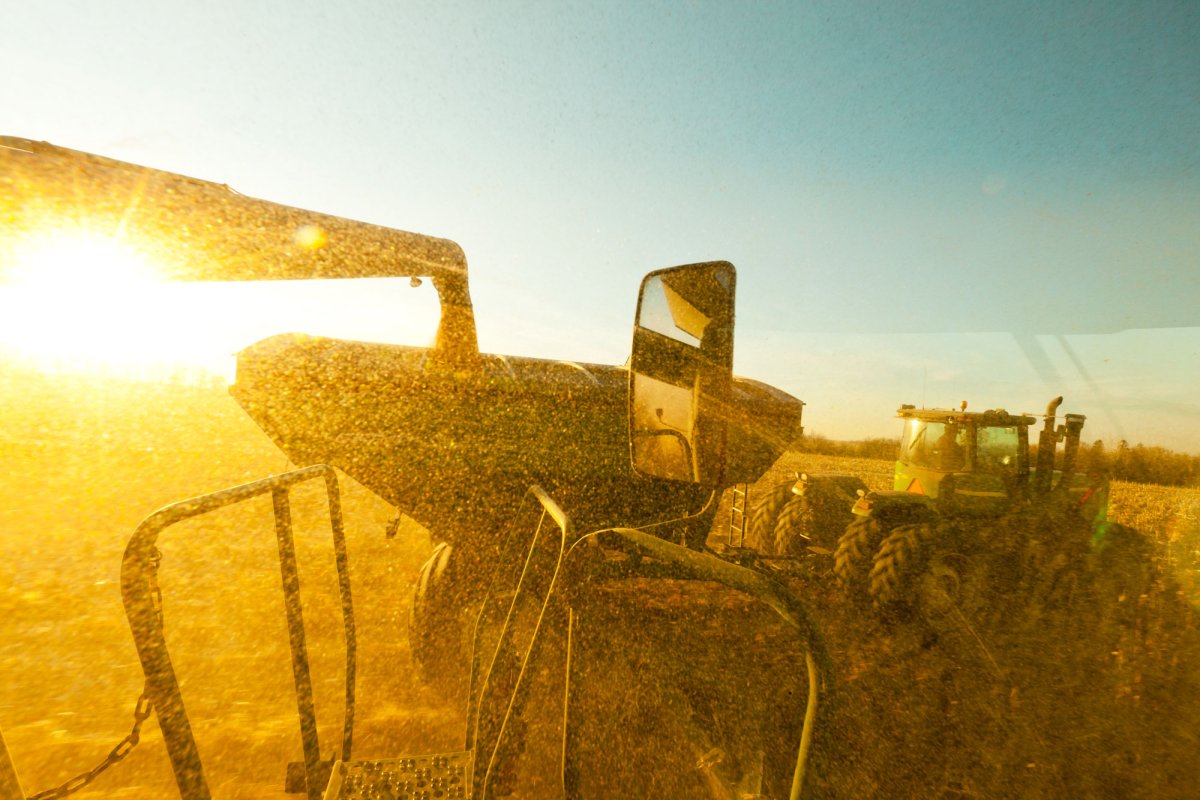A multibillion-dollar industry is contributing to the stifling humidity plaguing the Midwest.
The United States is a global leader in several commodities, including corn. In 2022, the U.S. corn industry amounted to more than $91 billion, according to Statista. As much as one-third of that crop is used for feeding cattle, but corn has other uses, such as being turned into renewable fuel. It can even affect the weather.
The Midwest is known for its expansive cornfields. Although the tall, dark green plants can be beautiful against a summer sky backdrop, they are making humidity worse through a phenomenon called evapotranspiration, otherwise known as "corn sweat." The sweat is worsening an already intense heat dome that is plaguing at least 100 million Americans this week in the Midwest.
"In a sense, it is sweating," AccuWeather Senior meteorologist Dale Mohler told Newsweek. "It's giving off moisture that the plant is obtaining through the ground."

The Midwest is already battling unbearable humidity, which can make it difficult for people to keep cool and increase the risks of overheating.
Corn can add 2 to 4 degrees to the dew point, or the temperature at which air must be cooled to become saturated with water vapor. Dew point and temperature are then used to determine the heat index, or how hot the air outside feels to the human body.
Corn can add 3 to 5 degrees to the heat index. Other crops like soybeans also conduct evapotranspiration, but they are much smaller than corn, meaning their impact is minimal.
The phenomenon is exacerbating hot Midwest weather, which is already sporting tropical-like dewpoints of 80 to 85 degrees, according to a social media post by WFLA-TV meteorologist Jeff Berardelli.
The corn sweat phenomenon is strongest from mid-July to mid-August, when the plants are at their largest. Summer humidity only worsens the issue.
"If it's already humid outside, the conditions are right for the corn to give off more moisture," Mohler said. "It's kind of like a human being. We sweat to keep us cool, the corn is sweating to keep the plan cool. The same process that heat serves for humans keeps plants from turning into popcorn."
Mohler stressed that those living in the Midwest exercise caution this week with the humidity. In some cases, the weather can be fatal. A 1-year-old girl died in Nebraska on Monday after she was left in a day care center's van.
"Any small amount of exertion and your body can overheat very quickly," Mohler said.
Uncommon Knowledge
Newsweek is committed to challenging conventional wisdom and finding connections in the search for common ground.
Newsweek is committed to challenging conventional wisdom and finding connections in the search for common ground.
About the writer
Anna Skinner is a Newsweek senior reporter based in Indianapolis. Her focus is reporting on the climate, environment and weather ... Read more
To read how Newsweek uses AI as a newsroom tool, Click here.






